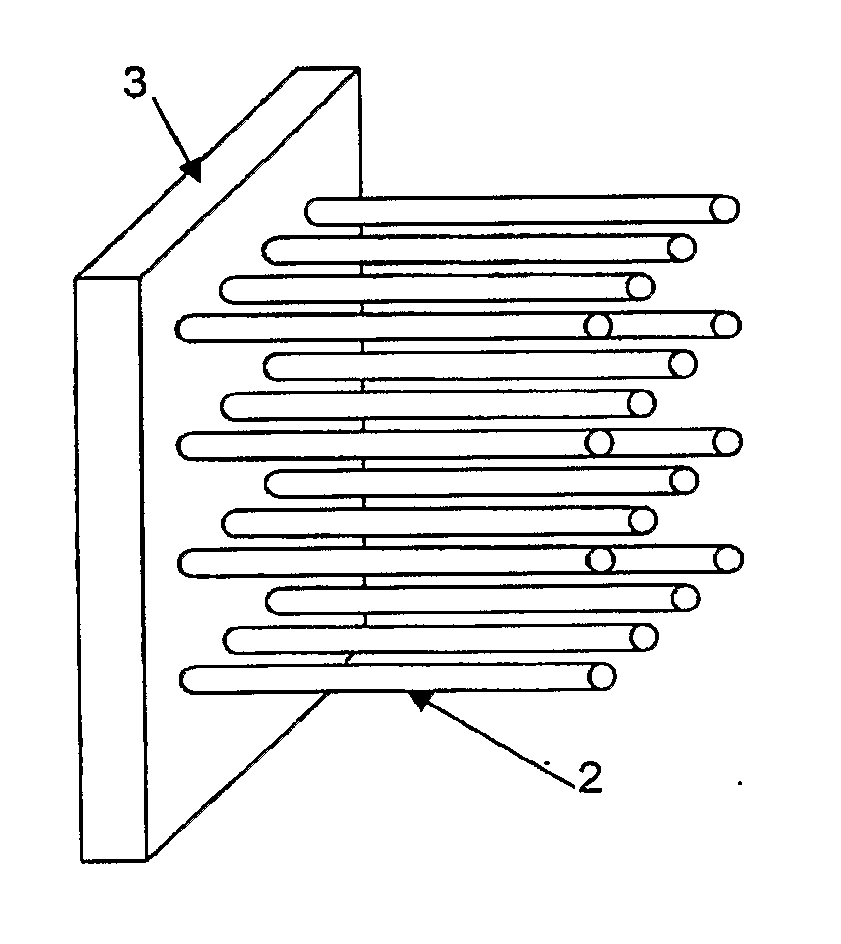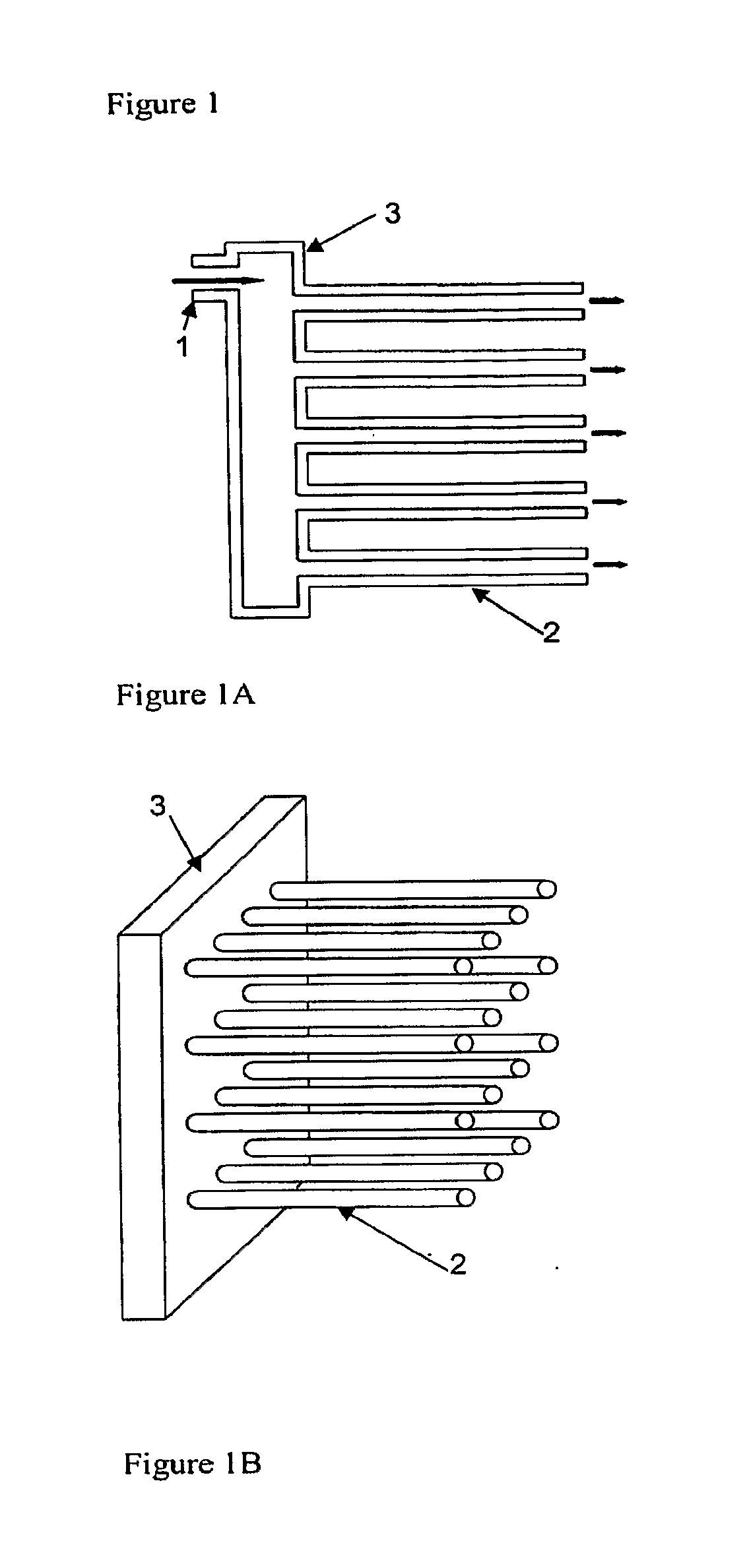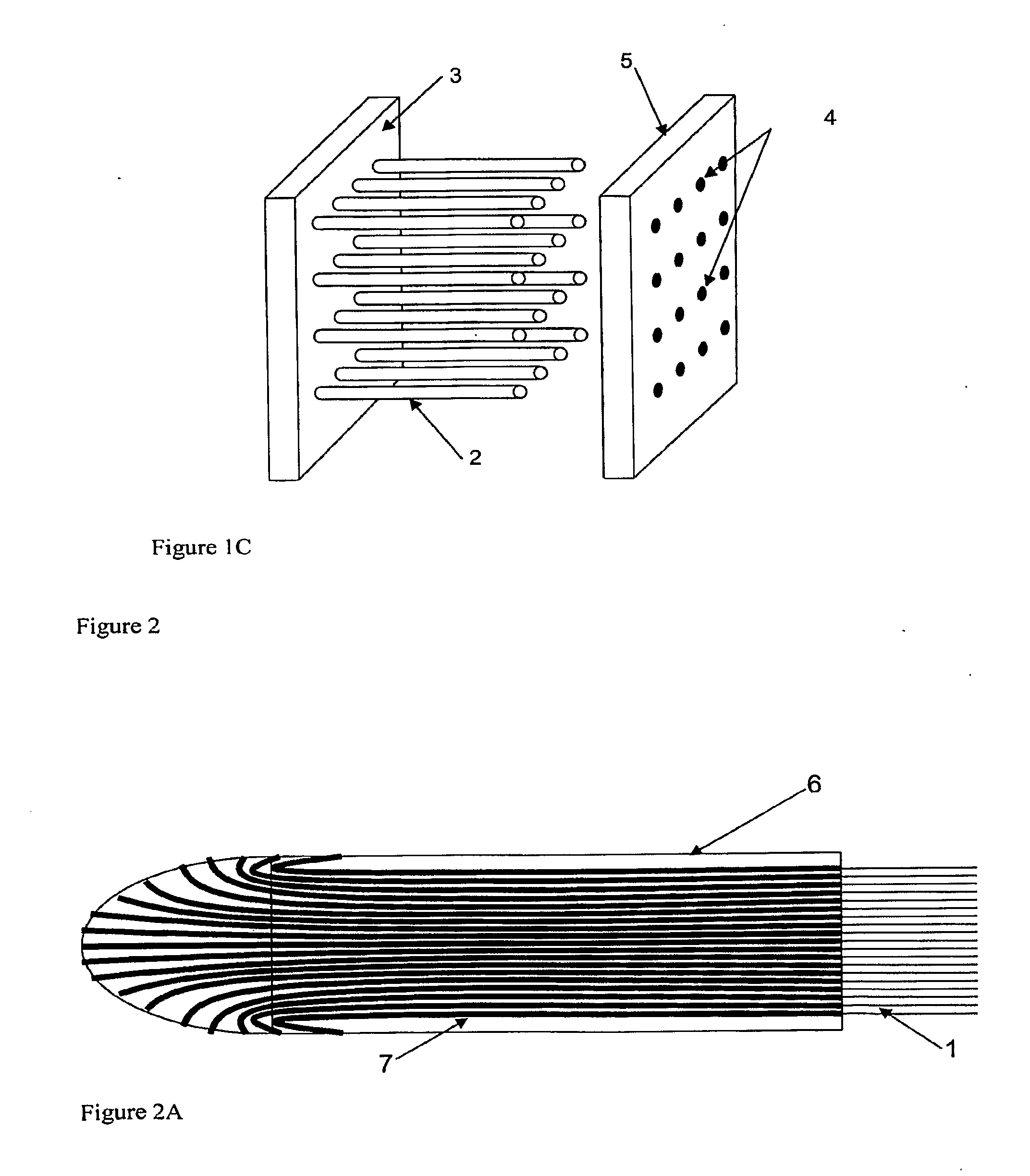Catheter and array for anticancer therapy
a catheter and array technology, applied in the field of neoplasia treatment, can solve the problems of severe and irreparable damage to the tissues in and around the intended treatment field, the cancerous cells are likely to maim or destroy the organ in which the cancer originated, and chemotherapy may not be able to eradicate the tumor cells, so as to increase the mechanical strength and increase the mechanical strength
- Summary
- Abstract
- Description
- Claims
- Application Information
AI Technical Summary
Benefits of technology
Problems solved by technology
Method used
Image
Examples
Embodiment Construction
[0083]An embodiment of the present invention is directed to a catheter array system for delivery of a liquid solution of a bioactive agent into a target tissue of a patient; the system comprising: a plurality of biocompatible catheters, each catheter comprising a linear or curvilinear hollow tube and being adapted for insertion into the body tissue, for remaining within the tissue for a period of time, and for delivery of the solution of the bioactive agent through the tube into the tissue; a catheter guide template adapted for guiding emplacement of each of the plurality of catheters into a tissue adjacent to the guide template to form a spatially defined catheter array within the tissue; and, a pressurized liquid supply system adapted for delivery of a liquid via a manifold to each of the catheters; wherein each catheter comprises a distal portion for insertion into the tissue, at least one port whereby the solution can pass from inside the hollow tube into the tissue, a median po...
PUM
 Login to View More
Login to View More Abstract
Description
Claims
Application Information
 Login to View More
Login to View More - R&D
- Intellectual Property
- Life Sciences
- Materials
- Tech Scout
- Unparalleled Data Quality
- Higher Quality Content
- 60% Fewer Hallucinations
Browse by: Latest US Patents, China's latest patents, Technical Efficacy Thesaurus, Application Domain, Technology Topic, Popular Technical Reports.
© 2025 PatSnap. All rights reserved.Legal|Privacy policy|Modern Slavery Act Transparency Statement|Sitemap|About US| Contact US: help@patsnap.com



